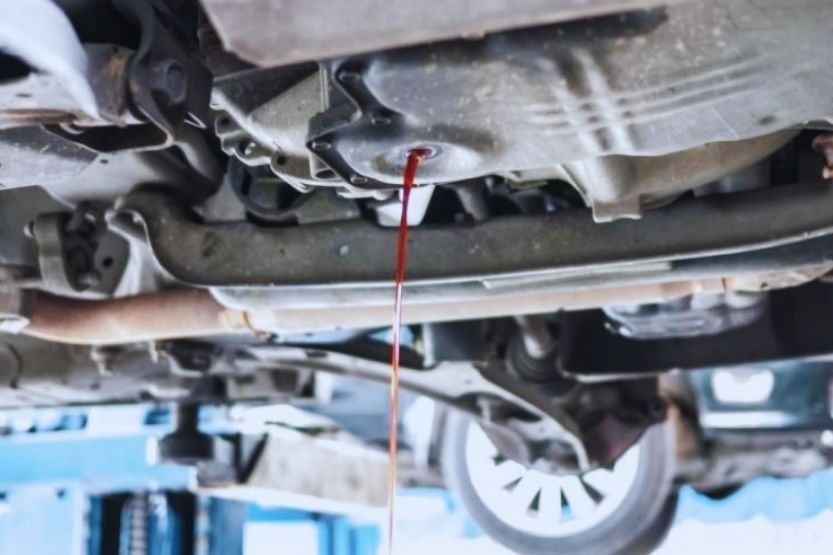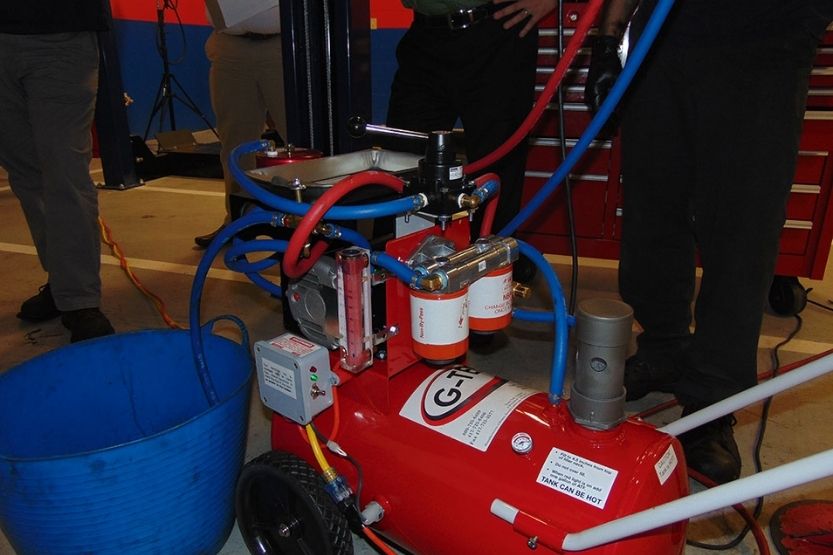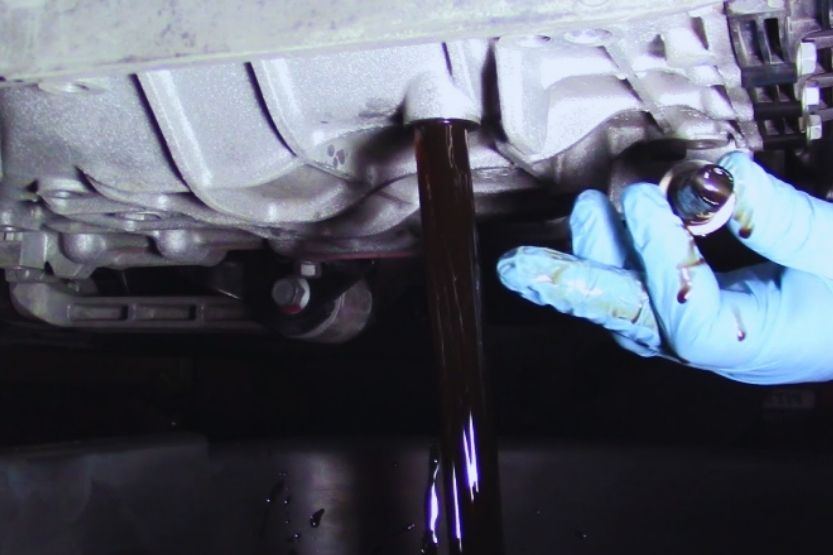A transmission flush is an important but often ignored procedure to maintain car health. I’ve put together this guide to answer some of your essential questions about a transmission fluid flush to understand better how crucial it is.
The purpose of a transmission fluid flush is to prevent potential transmission issues and keep your vehicle in good shape. A mechanic removes old, dirty fluid from the transmission pan during this procedure and replaces it with new fluid.
Read on to get in-depth information about transmission fluid flushes and signs your vehicle needs one.
What Is a Transmission Flush?

A Transmission Allows Cars to Run at a Certain Speed
Any car owner knows that the transmission plays a crucial function in running a vehicle. It allows your car to run at a certain speed while protecting the engine from excessive strain. But to do its job, its mechanical parts need to be fully lubricated to prevent grinding, overheating, and rusting.
Transmission Fluid Accumulates Dirt
But as time goes on, transmission fluid becomes old and dirty. If you don’t replace it, your transmission must work harder and eventually become damaged. The last thing you want is to replace your car’s transmission, which is expensive. On average, replacing it could cost you anywhere between $1,800 and $3,400, excluding the labor charges.
A Mechanic Drains the Fluid in the Transmission Pan
That’s where a transmission flush comes into the picture. It’s a maintenance procedure where a professional mechanic drains the fluid in the transmission pan. In most cases, mechanics use an automatic transmission flush machine to push out impurities, drain the old fluid (including the torque converter fluid), and refill the transmission with fresh fluid.
How Long Does a Transmission Flush Take?
The average time is between three to four hours. This will only take this long if you hire a professional mechanic who uses a flushing machine. In some cases, it takes only an hour.
Factors That Affect the Interval for a Transmission Flush
Several factors could influence the interval for a transmission flush, including the following:
- Type of transmission: Automatic or Manual,
- Climate: Do you usually use your vehicle in cold or hot climates?, and
- Terrain
What Is the Difference Between Transmission Fluid Flush and Transmission Fluid Change
But, don’t confuse transmission fluid flush with transmission fluid change. They’re not the same, although they serve the same purpose—to improve your car’s overall performance and extend its life.
Transmission Fluid Change Does Not Remove All the Old Transmission Fluid
Transmission fluid change drains out old transmission fluid with the help of gravity then replaces it with fresh fluid. However, it doesn’t remove contaminants and all the old transmission fluid. According to estimates, it takes out only around 20 to 40% of the total fluid inside the transmission pan.
A Transmission Flush Drains Out All of the Old Fluid
Unlike transmission fluid change, a transmission fluid flush drains out all of the old fluid. And aside from fresh transmission fluid, it introduces a special cleaning solution to clean the lines thoroughly. Mechanics also use a professional-grade machine to perform a complete transmission oil service.
Signs Your Vehicle Needs a Transmission Flush
The recommended service interval for a transmission flush will differ for every vehicle. The best advice is to go through your vehicle’s manufacturer-provided manual to know how often you do it and what type of transmission fluid to use.
A common transmission fluid flush interval is every 3,000 miles or every two years. Compared to automatic transmissions, manual transmissions will usually require more frequent transmission fluid flushes—around every 30,000 to 60,000 miles.
As much as possible, get the help of a professional to get an idea of the transmission fluid’s condition.
If you notice any of these things, you may need to have your vehicle’s transmission fluid inspected and replaced:
1. Deep Brown or Red Transmission Fluid
Fresh transmission fluid should appear red transparent. If it’s light brown and semi-transparent, it’s still in relatively good condition. But if it’s already dark brown and opaque, it means it’s already old and dirty.
2. Transmission Slipping
When your transmission “slips,” it could feel like your vehicle is slow to respond or responds out of sync. When your transmission fluid is contaminated, low, or worn out, this happens.
3. Shifting Problems
Ineffective fluid may cause your transmission to delay when shifting or jerk between gears.
4. Leakage
There’s transmission fluid leakage from the cylinder block, also known as the engine block.
5. Strange Smell and Sound
There’s a burning smell or buzzing sound inside your vehicle.
6. Power
Your vehicle is losing power or won’t start.
7. Check Engine Light
The transmission temperature warning light or check engine light is on.
How Safe Is a Transmission Flush?

A commonly asked question is, “Will a transmission flush hurt my car?” While there are debates about its efficacy, a transmission flush is generally safe for your vehicle if a qualified mechanic performs it.
Safe and Necessary
It’s not only safe, but it’s also necessary, especially for older vehicles. By removing residue and harmful deposits from a transmission, most agree that it helps improve a vehicle’s performance and lifespan. Without regular maintenance and service, some transmissions could last only 100,000 miles.
Note: The lifespan of a vehicle, specifically its transmission, is on a case-by-case basis. There’s no fixed mileage or time frame with which it’s expected to fail.
Improves Shifting and Regulates the Transmission Temperature
Aside from extending the life of your transmission, it also improves shifting and regulates the transmission temperature. At high operating temperatures, several things could happen that could negatively impact the operation of your transmission, such as:
- The transmission fluid becomes brown and smells like burned toast because of oxidation.
- The transmission fluid also loses its lubricating qualities, which could end up damaging all of the metal gears in your transmission.
Cannot Fix Preexisting Transmission Problems
However, just a heads up—it’s not going to fix any preexisting transmission problems. Others also believe that power-flushing using a professional-grade machine can damage your vehicle.
In high-mileage cars, they say it could cause sludge and other harmful materials to get dislodged in areas where it shouldn’t be, which could eventually lead to clogging and failure. In addition, they believe the force of the pressure could break or weaken the seals and valves.
Legitimate Maintenance Procedure
Overall, transmission fluid flushing is a legitimate maintenance procedure typically considered safe and necessary. If you’re afraid it will hurt your vehicle, it’s best to direct your concerns to your dealership or local service center.
Again, what is a transmission flush? A transmission flush is a procedure done by a mechanic to prevent future transmission problems. It involves eliminating the old fluid, then replacing it with fresh transmission fluid.
How Much Does Flushing a Transmission Cost?
Factors That Affect Transmission Flushing Cost
The cost of getting a transmission flush will vary depending on several factors, including:
- Type of shop you go to for this service: Dealership, quick-lube shop, and an independent mechanic
- Vehicle’s year, make, and model: High-end cars typically cost more.
- Transmission’s year, make, and model
- Machine mechanics used: Cooler line and pump inlet
- Extra services: Filter replacement and pan removal
- Type and amount of transmission fluid used
Flushing a 2010 Camry in NYC
For example, flushing a 2010 Camry in New York would cost around $163 to $242. But the average price of this service usually ranges from $125 to $250.
Dealership vs Quick-lube Shop
A dealership might also charge more than a quick-lube shop. Some dealerships might charge $150 to $300, while quick-lube shops might charge around $100 to $200.
Transmission Flush vs Transmission Fluid Change
A transmission flush usually costs twice as much as a transmission fluid change because it uses more fluid to replace the old one. According to estimates, the additional transmission fluid required for flushing ranges from 384 to 704 ounces (around 12 to 22 quarts).
Whatever the price might be, a transmission fluid flush is worth it. It still costs a lot less than buying a replacement transmission. Plus, failing to maintain your vehicle’s transmission regularly could leave you with an expensive repair bill.
Can You Do a Transmission Flush Yourself?
Complicated and Messy Job
You could try if you have the know-how and equipment. But checking and replacing transmission fluid can be a complicated and messy job for an average car owner.
Requires Complicated Machines
Transmission fluid flush will require sophisticated machines and other pieces of fluid-handling equipment. These could include a car lift, professional-grade flushing machine, ramps, rolling drain pan, and so on.
It can be messy because many transmission pans don’t have a drain plug. That’s why they need to be removed for servicing.
Manufacturers don’t put a drain plug on their automatic transmission pans because it’s usually situated on the bottom. Because of its location, it can be hit or scraped by road debris or a bump in the road.
In most modern cars, the transmission is tightly sealed. You might also need to bring them to a dealer, so they can use their service computer to read the temperature and other important parameters. Unless you have access to this sophisticated automotive dealership software, a do-it-yourselfer can’t take on this work.
Factors to Consider When Choosing Where to Get a Transmission Flush

When it comes to your vehicle’s transmission, it’s best to leave it to skilled transmission professionals who have years of experience servicing transmissions. Here are a few things to consider when choosing where to get a transmission fluid flush:
1. Knows the Ins and Outs of Your Vehicle
Sure, there’s always the owner’s manual to refer to. However, certain transmission issues are specific to your vehicle’s build and model that a mechanic can only fix with years of experience.
And as I’ve mentioned, the interval for transmission flushing varies for every vehicle. Specifically, its manufacture year, make, and model. The average interval might be 3,000 miles for many vehicles, but with your vehicle, it might be significantly longer.
2. Quick-Lube Shop Vs Dealership
Should you go to a quick-lube shop or a dealership for a transmission flush? Based on some sources, most people go to non-dealership service facilities, such as quick-lube shops, for maintenance work.
Technicians At Major Dealerships Have an Automotive Background
There are many reasons why this isn’t always a good idea. For example, the technicians in most quick-lube shops didn’t usually complete a mechanic training program and worked as an intern to earn the automotive technician title. On the other hand, technicians at major dealerships typically have an automotive background and complete the necessary training and tests for certification.
Dealerships Offer Competitive Prices
Now, you might be concerned about the cost of transmission fluid flush at a dealership. Yes, dealerships might sometimes charge more than quick-lube shops. However, that’s not always the case. Most major dealerships offer competitive prices with most independent shops.
And as they always say, you get what you pay for. So, make sure you do your research before making up your mind. Ask for recommendations from friends and family.
3. Warranties
Is a transmission fluid flush covered under warranty? Warranties are going to be greatly different for every shop. So, be sure to ask them about their warranties ahead of time.
Caveat: Many vehicle manufacturers are against using chemicals for transmission fluid flushing. They might even void the warranty of your transmission if they’re able to prove that these chemicals have been used during this procedure or regular maintenance service.
Why You Shouldn’t Allow the Use of Chemicals or An External Machine During a Transmission Fluid Flushing
There are several reasons why you shouldn’t allow the use of chemicals or an external machine during a transmission fluid flushing:
1. Improperly Connected Flushing Machines Can Block the Transmission’s Passages
Flushing machines, especially when they’re improperly connected, could pressurize or block the wrong passages inside your vehicle’s transmission. This could lead to severe damage. Some of these machines could drain out more fluid than desired.
2. Chemicals Can Potentially Damage the Transmission
Car manufacturers believe that some of these chemicals might damage your transmission. The theory is that transmission flush machines can replace only around 80% to 90% of the old transmission fluid. Therefore, there’s a good chance that some of these chemicals are left inside your transmission after the procedure.
Conclusion – What Is a Transmission Flush?
Simply put, a transmission flush is a maintenance procedure that uses a particular machine to drain the old transmission fluid and introduce fresh fluid to keep your vehicle healthy. This procedure aims to prevent future transmission issues and maintain your vehicle working as it should for a long time.
While it has many benefits, debates are still ongoing on whether a transmission flush is effective and safe. Fortunately, there’s only a small chance that a flush machine damages your transmission. To ensure it never happens, turn your vehicle over to a long-standing dealership with a good track record.

![Transmission Flush Cost [How Much Is It?] transmission flush cost](https://roadsumo.com/wp-content/uploads/2022/10/transmission-flush-cost-150x150.jpg)



![Best All-Season Tire for Snow [Top 10 Tires] best all season tire for snow](https://roadsumo.com/wp-content/uploads/2022/10/best-all-season-tire-for-snow-150x150.jpg)
![What Is the Front of a Car Called? [All About the Front] what is the front of a car called](https://roadsumo.com/wp-content/uploads/2022/05/what-is-the-front-of-a-car-called-150x150.jpg)

![Read more about the article Oil in Coolant [Causes and Solutions to Coolant in Oil]](https://roadsumo.com/wp-content/uploads/2021/10/oil-in-coolant-300x200.jpg)
